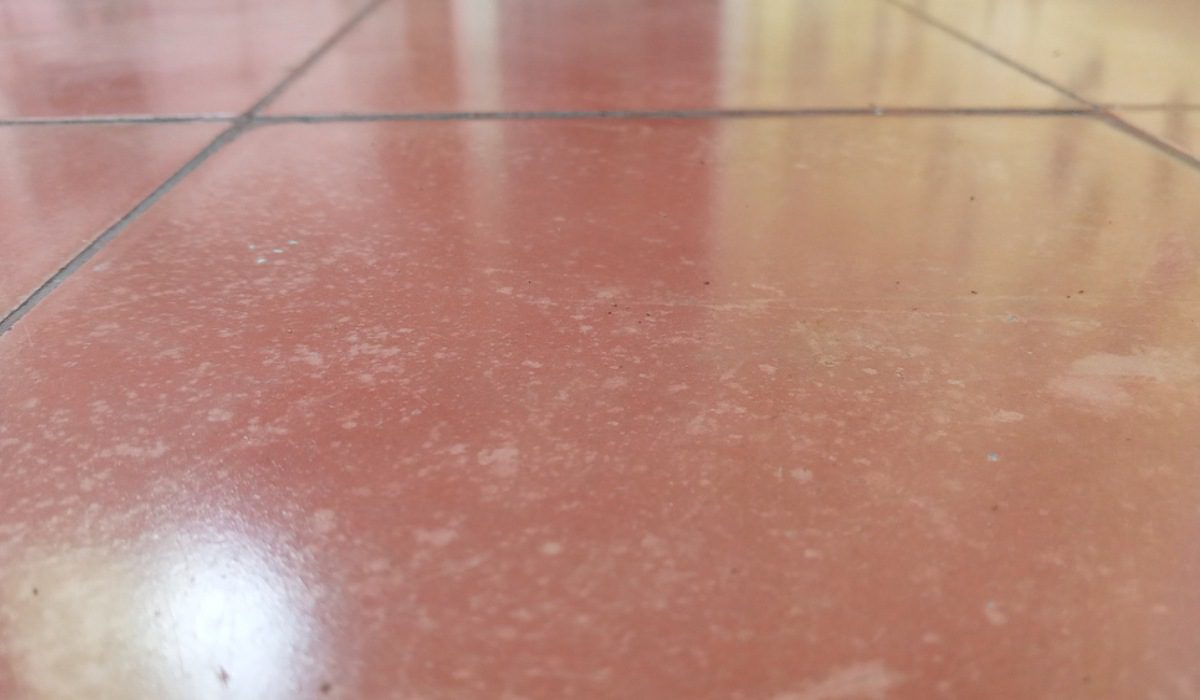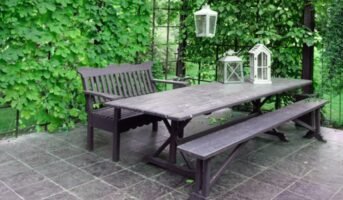Oxide flooring, a flooring type with a history spanning centuries in India, was once linked to royalty and maintains its popularity, particularly in south India. When incorporated into living spaces, this flooring imparts a luxurious and sophisticated appearance. Recognized for its eco-friendly and cost-effective characteristics, oxide flooring stands out as a versatile choice with a variety of colours available. The flooring is crafted using pigments or oxides to infuse vibrant hues into the cement mixture. While it is available in numerous colours, red oxide flooring stands out as the most widely favoured option.
Oxide flooring: Types
Oxide floorings come in a range of shades, allowing you to choose a colour that complements the aesthetics and style of your interiors. Here are some common types of oxide flooring available.
Red oxide flooring
Red oxide is the most prevalent colour for oxide flooring. It imparts an earthy appearance and pairs well with classic and rustic interiors.
See more about: Red oxide flooring
Black oxide flooring
Black oxide is ideal for achieving a dramatic and elegant look. It can be used to create a striking contrast with elements in your space.
Yellow oxide flooring
Yellow oxide is an excellent choice for creating a lively and bright space. It can uplift any area with a sense of joy.
Blue oxide flooring
Blue oxides, though less commonly used, can add a unique touch to any space. This colour can foster a calm and serene atmosphere in your living space.
Read more about: Blue oxide flooring
Green oxide flooring
Green oxide flooring can be applied in areas where a connection with nature is desired. It is most suitable for gardens and outdoor space.
Brown oxide flooring
Brown oxide provides an earthy feel and complements both traditional and contemporary architecture.
Grey oxide flooring
Grey, being a neutral and modern colour, is suitable for minimalist interiors. Grey oxide floorings offer a sleek and industrial look.
Terracotta oxide flooring
Terracotta oxide resembles the colour of clay pots. Use it for your flooring if you desire a traditional or Mediterranean-inspired look.
Oxide flooring: Advantages
Oxide floorings are gaining popularity for several reasons. These include:
- Affordable: Oxide flooring offers a budget-friendly alternative to more expensive flooring types like marble and granite. It can also serve as an economical substitute for designer carpets, with designs embossed directly onto the floor to impart a luxurious feel to your home.
- Long-lasting: Oxide floorings exhibit remarkable durability, lasting for decades. Over time, they develop a shinier and smoother appearance. Additionally, they are low-maintenance and resistant to mould and fungus.
- Environmentally friendly: Made from entirely natural materials, oxide flooring is considered an environmentally sustainable option, contributing to a greener living space.
- Suitable for warm climates: Oxide floorings are particularly suitable for warm climates, offering a cooler surface during the summer months compared to wooden or tiled floors.
- Smooth finish: Providing a seamless surface, oxide floorings deliver a smoother finish compared to marble or granite. They are also gentle on the feet, ensuring comfort when walking barefoot.
Oxide flooring: Disadvantages
Despite its advantages, oxide flooring comes with some disadvantages, such as:
- Requires skilled labour: Installing oxide floors is a meticulous process that demands skilled labour for correct installation. Without skilled professionals, even minor errors can lead to the development of cracks and gaps on the surface.
- Sustains damage from humidity: Oxide floorings are susceptible to damage in humid environments. Exposure to excessive rain or snow can result in surface cracks. Therefore, oxide flooring is better suited for the interiors of your home rather than outdoor space.
Oxide flooring: Cost
When contemplating the installation of oxide flooring, homeowners may question its financial feasibility. Despite its attractiveness and durability, oxide floorings are relatively inexpensive compared to other types of flooring. The cost typically falls within the range of Rs 80 to Rs 90 per square foot. This affordability is one of the factors contributing to the resurgence of oxide flooring.
FAQs
How long does oxide flooring last?
Oxide flooring is highly durable and can last for decades without requiring extensive maintenance. In fact, they tend to become shinier and smoother over the years.
What is oxide flooring made of?
Oxide flooring can be crafted using materials such as cement, lime, or dirt. It is particularly suitable for use on cement floors.
Is oxide flooring suitable for outdoor space?
Oxide flooring is better suited for the home interiors rather than outdoor space. Exposure to excessive rain or snow in humid environments can lead to surface cracks.
How much does oxide flooring cost?
Oxide flooring is a cost-effective option, typically ranging between Rs 80 to Rs 90 per square foot. Its affordability contributes to its resurgence in popularity.
Can I install oxide flooring myself?
No, installing oxide floors is a meticulous process that requires skilled labour for correct installation. Even minor errors by non-skilled labour can result in cracks and gaps on the surface.
| Got any questions or point of view on our article? We would love to hear from you. Write to our Editor-in-Chief Jhumur Ghosh at jhumur.ghosh1@housing.com |

Dhwani is a content management expert with over five years of professional experience. She has authored articles spanning diverse domains, including real estate, finance, business, health, taxation, education and more. Holding a Bachelor’s degree in Journalism and Mass Communication, Dhwani’s interests encompass reading and travelling. She is dedicated to staying updated on the latest real estate advancements in India.
Email: dhwani.meharchandani@housing.com












